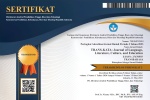Use of an Internet-Based Paraphrasing Tool and Inappropriate Textual Borrowing in University Students' Language Research Papers
DOI:
https://doi.org/10.54923/jllce.v5i1.113Keywords:
Descriptive-comparative research, internet-based paraphrasing tool, inappropriate textual borrowing, language research, PhilippinesAbstract
This quantitative study aimed to determine inappropriate textual borrowing using the traditional paraphrasing method and compared it to an internet-based paraphrasing tool. It also identified the types of paraphrasing that the tool uses. Additionally, it sought to identify the significant difference between the number of inappropriate textual borrowings when using these two methods. This study employed a descriptive-comparative research design involving the works of 48 third-year BSE English majors enrolled in a language research course at a state university in North Cotabato, Philippines. The results were interpreted and analyzed through Jalilifar et al.’s Coding Scheme and Keck’s Taxonomy of Paraphrasing. The study revealed that respondents were more prone to inappropriate textual borrowing when using the traditional method compared to using a tool. Specifically, self-plagiarism was common with the traditional method, while opaque citations were frequent when a tool was used. The study found that the tool predominantly employed substantial revisions (246 instances), followed by near copies (128 instances). Furthermore, a highly significant difference was found in the number of inappropriate textual borrowings between the two methods. Pedagogically, the study suggests teaching proper paraphrasing techniques and the ethical use of internet-based paraphrasing tools, promoting better academic integrity.
Downloads
Downloads
Published
How to Cite
Issue
Section
License
Copyright (c) 2024 Ms. Jaynette D. Jacildo, Gideon Sumayo

This work is licensed under a Creative Commons Attribution-ShareAlike 4.0 International License.





